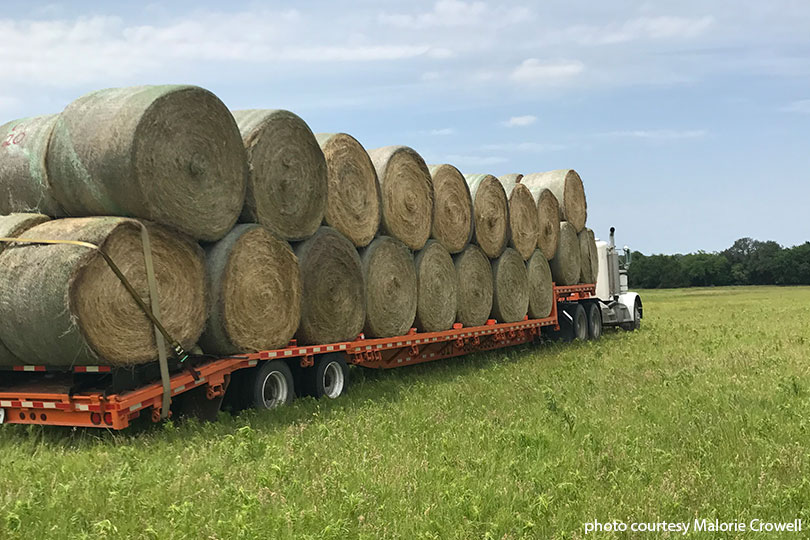By Emmy Powell
Communications Specialist
Hay season is underway, and farmers and ranchers say the outlook is promising.
Texas hay production has struggled with drought over the past few years, but the current season shows significant improvement. Across the state, many farmers and ranchers received spring and early summer rains.
“We had a lot of rain in the spring and right before summer. If you fertilized the hay, it is super thick,” Malorie Crowell, co-owner of a commercial hay operation in Hood-Somervell County and AgLead XVI member, said. We’re almost getting two cuttings from fields.”
She noted one field in the area made 150 square bales per acre, and Crowell’s fields have yielded six or more round bales per acre, compared to the average three bales per acre. “We’re doing double what we would normally do. I’m hoping that we get a little bit of rain here and there, and we don’t have a dry August like we always do,” she said. “But so far, the outlook is really good,.
The main challenge they face this season is keeping up with the high demand for cutting hay, which is a good problem to have. “We have a huge surplus, and the only issue is we can’t get over the ground fast enough,” Crowell said. “We would like to be able to do more, but we have to watch the weather, of course, and we don’t want to cut too much hay down because we don’t want it to be too dry when we bale it, and we don’t want it to be too damp when we bale it. So, we have to be careful on how many acres we cut per day to keep up with the balers.”
Although there is more hay available this year, Crowell said prices haven’t changed much yet.
“The hay prices haven’t gone down a whole lot,” she said. “If you look at a feed store, they’ve gone down a little bit. If you’re buying directly from the producer, I think it’ll go down somewhat because there’s just so much hay right now.”
But input costs remain high, which impacts the pricing of hay.
“Everything’s inflated—diesel, tractor parts, net wrap. Everything’s more expensive,” she said. “That plays a factor into the price of hay, too, even though there is more available this year.” But the weather brings uncertainty for the remainder of the year. If La Niña comes into play and the weather pattern gets hotter and drier, there may not be as much hay cut this fall.


I love hay but I do not love net wrap.
We have wild hogs getting into hay sometimes and the mess is terrible.